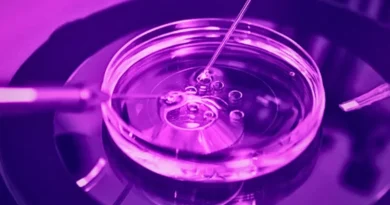Getting Pregnant After 35: What You Need to Know
Many women wonder if getting pregnant after 35 is possible and whether they can have a healthy pregnancy and a normal delivery. While it is true that fertility declines with age, many women successfully conceive and give birth to healthy babies well into their late 30s and 40s. However, age does bring additional considerations regarding conception, pregnancy risks, and the health of the baby.
As a woman ages, her ovarian reserve (the number and quality of eggs) decreases, and this can impact the chances of getting pregnant naturally. Despite this, advances in reproductive medicine, lifestyle modifications, and better prenatal care have made it possible for women over 35 to conceive and have safe pregnancies. This article explores fertility after 35, the potential challenges, risks, and complications, as well as proactive steps to improve fertility and ensure a healthy pregnancy.
Is It Possible to Get Pregnant After 35?
Yes! Many women conceive naturally after 35, though fertility does decline with age. Women are born with a finite number of eggs, and as they age, both the quantity and quality of eggs decrease. By the mid-30s, the decline in fertility starts to accelerate, and by the early 40s, the chances of natural conception drop significantly.
However, this does not mean that pregnancy is impossible. Many factors, such as genetics, lifestyle, and overall health, play a crucial role in determining fertility. Women with healthy ovarian reserves, good reproductive health, and no underlying medical conditions can still conceive naturally without any complications.
For those who struggle to conceive, medical interventions such as fertility treatments, hormone therapies, and assisted reproductive techniques (ART) like IVF (In Vitro Fertilization) can improve their chances.
(Source: Mayo Clinic)
How Long Does It Take to Conceive After 35?
One of the most common concerns for women over 35 is how long it will take to conceive. While some women conceive within a few months, others may take longer. Studies show that:
- Women aged 35-37 have about a 75% chance of conceiving within a year of trying.
- Women aged 38-40 have about a 65% chance.
- By 41-42, the chances drop to around 50%.
(Source: National Library of Medicine)
The reason for this decline is that the number of genetically normal eggs decreases with age. As a result, not every cycle will lead to a viable pregnancy. Additionally, the likelihood of anovulation (lack of ovulation) increases, making conception more difficult.
When to See a Fertility Specialist?
For women under 35, doctors recommend trying naturally for 12 months before seeking medical advice. However, for women over 35, it is advisable to consult a fertility specialist if pregnancy has not occurred within 6 months of trying. Early intervention can improve the chances of conception by identifying potential fertility issues and providing targeted treatments. (Source: National Institute of Child Health and Human Development)
Fertility Treatments for Women Over 35
For those who experience difficulties conceiving naturally, fertility treatments can offer a viable solution. Some common fertility treatments include:
1. Ovulation Induction
- How It Works:
- Ovulation induction involves medications like Clomid (Clomiphene Citrate) or Letrozole, which stimulate the ovaries to release eggs in women who have irregular or absent ovulation.
- These medications help increase the number of mature eggs available for fertilization, improving the chances of conception.
- Who Can Benefit?
- Women with irregular menstrual cycles, PCOS, or unexplained infertility.
- Women with low ovarian reserve but still producing some viable eggs.
(Source: American Society for Reproductive Medicine)
2. Intrauterine Insemination (IUI)
- How It Works:
- IUI is a minimally invasive fertility procedure where sperm is directly inserted into the uterus using a catheter. This increases the chances of sperm meeting the egg by bypassing potential obstacles in the cervix.
- Sperm is usually washed and concentrated before being inserted to improve motility and increase success rates.
- Who Can Benefit?
- Couples with mild male factor infertility (low sperm motility or count).
- Women with unexplained infertility or cervical issues.
- Those who wish to use donor sperm.
- Success Rates:
- IUI success rates decline with age, averaging 10-15% per cycle for women under 35, but dropping to 5-10% per cycle for women over 35.
(Source: *Mayo Clinic)
3. In Vitro Fertilization (IVF)
- How It Works:
- IVF is a multi-step process involving ovarian stimulation, egg retrieval, fertilization in a lab, and implantation of an embryo into the uterus.
- In some cases, Intracytoplasmic Sperm Injection (ICSI) is used to directly inject a sperm cell into an egg to assist fertilization.
- Why IVF is Recommended for Women Over 35?
- Older women often have fewer high-quality eggs, and IVF can help identify and select the healthiest ones.
- Preimplantation Genetic Testing (PGT) can be used to screen embryos for genetic abnormalities, reducing the risk of miscarriage and chromosomal disorders like Down syndrome.
- IVF success rates vary, but for women aged 35-37, the success rate is around 40% per cycle, dropping to 25% for women aged 38-40.
(Source: *Centers for Disease Control and Prevention (CDC))
4. Egg Freezing (Oocyte Cryopreservation)
- How it Works?
- Egg freezing allows women to preserve younger, healthier eggs for future use. The process involves ovarian stimulation, egg retrieval, and flash-freezing the eggs for storage.
- When the woman is ready to conceive, the eggs can be thawed, fertilized with sperm, and implanted using IVF.
- Who Should Consider Egg Freezing?
- Women in their late 20s or early 30s who wish to delay pregnancy.
- Women diagnosed with medical conditions that may impact fertility, such as endometriosis or cancer.
- Those who are not ready for children but want to preserve their fertility for later years.
- Success Rates:
- Egg quality declines with age, so freezing eggs before age 35 offers the highest chance of a successful pregnancy later on.
- Women using frozen eggs under 35 have a success rate of 40-50%, compared to 15-20% for women who freeze eggs after 38.
(Source: **Harvard Medical School)
How to Boost Fertility and Have a Healthy Pregnancy After 35
While fertility does decline, there are ways to optimize reproductive health and increase the chances of conception. Here are some essential steps:
1. Maintain a Healthy Diet
- Folic Acid & Iron: Essential for egg health and fetal development.
- Omega-3 Fatty Acids: Found in fish, nuts, and seeds, these improve egg quality and reduce inflammation.
- Antioxidants: Protect eggs from damage and improve embryo implantation.
- Limit Processed Foods & Caffeine: Processed foods can cause inflammation, while excessive caffeine intake can affect ovulation.
2. Exercise Regularly
- Helps maintain a healthy weight, which improves fertility.
- Reduces stress hormones, which can negatively impact ovulation.
- Strengthens the cardiovascular system, improving placental function during pregnancy.
3. Monitor Ovulation
- Tracking ovulation helps in timing intercourse correctly to improve chances of conception.
- Women with irregular cycles may benefit from hormonal testing to assess ovarian function.
4. Reduce Stress and Get Enough Sleep
- Chronic stress can disrupt hormone levels and ovulation.
- 7-9 hours of sleep per night supports reproductive health.
(Source: Harvard Medical School)
Risks Involved in Pregnancy After 35
While many women successfully conceive and deliver healthy babies after 35, pregnancy at an advanced maternal age does come with certain risks. Understanding these potential complications can help women take proactive steps to mitigate them and ensure a healthy pregnancy.
1. Increased Risk of Miscarriage
One of the biggest concerns for women over 35 is the higher risk of miscarriage. Research suggests that the rate of miscarriage rises with age, primarily due to a decline in egg quality and chromosomal abnormalities.
- In women under 35, the miscarriage rate is around 10-15%.
- By ages 35-39, the risk rises to 20-25%.
- For women over 40, the risk jumps to 35-50%.
As a woman ages, the number of genetically normal eggs decreases, which increases the likelihood of pregnancy loss. Preimplantation Genetic Testing (PGT) during IVF can help select healthy embryos to reduce the risk of miscarriage.
(Source: American College of Obstetricians and Gynecologists)
2. Higher Risk of Chromosomal Abnormalities
Older eggs have a higher chance of chromosomal errors, increasing the likelihood of genetic disorders in the baby. The most common condition associated with maternal age is Down syndrome.
- At age 25, the chance of having a baby with Down syndrome is 1 in 1,250.
- By age 35, the risk increases to 1 in 350.
- By age 40, the risk is 1 in 100.
Because of this increased risk, doctors may recommend non-invasive prenatal testing (NIPT), amniocentesis, or chorionic villus sampling (CVS) to check for genetic abnormalities.
(Source: Mayo Clinic)
3. Gestational Diabetes
Gestational diabetes, a condition in which blood sugar levels become too high during pregnancy, is more common in women over 35. This occurs due to insulin resistance, which naturally increases with age.
Complications of gestational diabetes include:
- Excessive fetal growth (macrosomia) – Leading to difficult labor and a higher chance of C-section.
- Higher risk of preeclampsia – A dangerous condition causing high blood pressure and organ damage.
- Neonatal complications – Babies born to mothers with gestational diabetes have a higher risk of low blood sugar, obesity, and type 2 diabetes later in life.
Women over 35 should monitor their blood sugar levels, follow a low-glycemic diet, and engage in regular exercise to reduce the risk of gestational diabetes.
(Source: Centers for Disease Control and Prevention (CDC))
4. High Blood Pressure and Preeclampsia
Pregnant women over 35 are at a higher risk of developing hypertension (high blood pressure) and preeclampsia, a serious condition that can lead to complications for both the mother and baby.
Preeclampsia can cause:
- Preterm birth – The baby may need to be delivered early to avoid complications.
- Organ damage – Affects the kidneys, liver, and brain in severe cases.
- Placental problems – Reducing oxygen and nutrient supply to the baby.
Regular blood pressure monitoring, a heart-healthy diet, and exercise can help lower the risk.
(Source: National Institutes of Health (NIH))
5. Higher Chances of Preterm Birth & Low Birth Weight
Preterm birth (delivery before 37 weeks) is more common in women over 35. Babies born prematurely are at greater risk of:
- Breathing difficulties (underdeveloped lungs)
- Feeding problems
- Weaker immune systems
- Developmental delays
Additionally, low birth weight (under 5.5 lbs) is more likely in pregnancies after 35. Ensuring adequate prenatal care, proper nutrition, and managing underlying health conditions can reduce these risks.
(Source: World Health Organization (WHO))
6. Increased Risk of C-Section Delivery
Women over 35 are more likely to need a C-section due to:
- Higher risk of pregnancy complications (preeclampsia, gestational diabetes).
- Reduced uterine flexibility (which can make vaginal delivery more difficult).
- Greater chance of fetal distress during labor.
While many women can still have a normal vaginal delivery, doctors may recommend a planned C-section if there are health risks.
7. Placental Complications
As women age, the risk of placental problems increases, including:
- Placenta previa – When the placenta covers the cervix, making vaginal delivery impossible.
- Placental abruption – The placenta detaches from the uterus too early, leading to bleeding and oxygen deprivation for the baby.
Women over 35 should receive regular ultrasounds to monitor placental health and follow medical guidance for a safer pregnancy.
(Source: Johns Hopkins Medicine)
How to Reduce Pregnancy Risks After 35
While these risks exist, many women over 35 have healthy pregnancies by taking proactive steps:
- Schedule a Preconception Checkup – Identify and manage any underlying health conditions before pregnancy.
- Maintain a Healthy Diet – Eat foods rich in folic acid, iron, omega-3s, and antioxidants to support a healthy pregnancy.
- Exercise Regularly – Engage in low-impact activities like walking, swimming, and prenatal yoga to improve circulation and reduce complications.
- Monitor Blood Sugar and Blood Pressure – Regular screenings can help detect issues early.
- Reduce Stress and Prioritize Sleep – Chronic stress and sleep deprivation can disrupt hormonal balance and affect pregnancy.
- Follow Prenatal Care Guidelines – Regular doctor visits ensure both maternal and fetal health.
By taking these measures, women can increase their chances of a smooth pregnancy and deliver a healthy baby, even after 35.
(Source: Harvard Medical School)
Getting pregnant after 35 is entirely possible, but women should be aware of the challenges and take proactive steps to maintain their fertility and overall health. While natural conception may take longer, a healthy diet, regular exercise, stress management, and medical assistance can significantly improve the chances of a successful pregnancy.
For women struggling to conceive, consulting a fertility specialist early can help identify any potential issues and provide tailored treatment options.





Pingback: IVF Treatment Process and Success Factors - My Fertitliy Hub